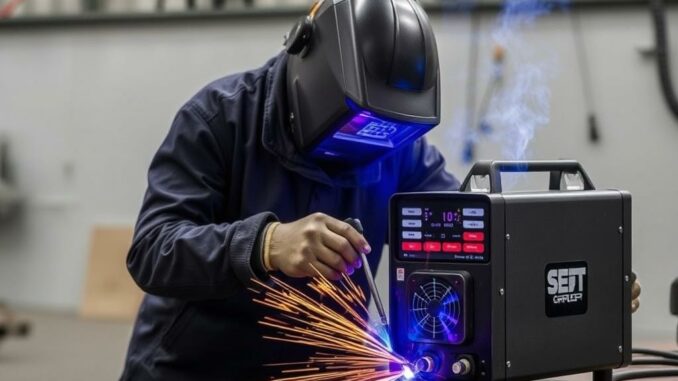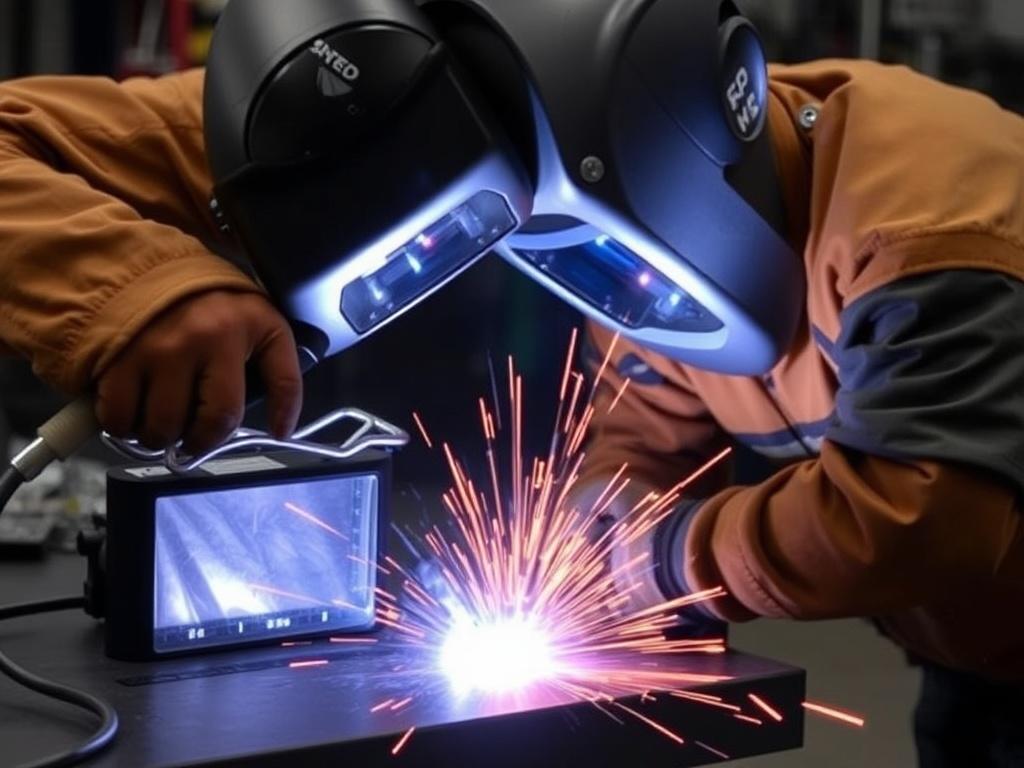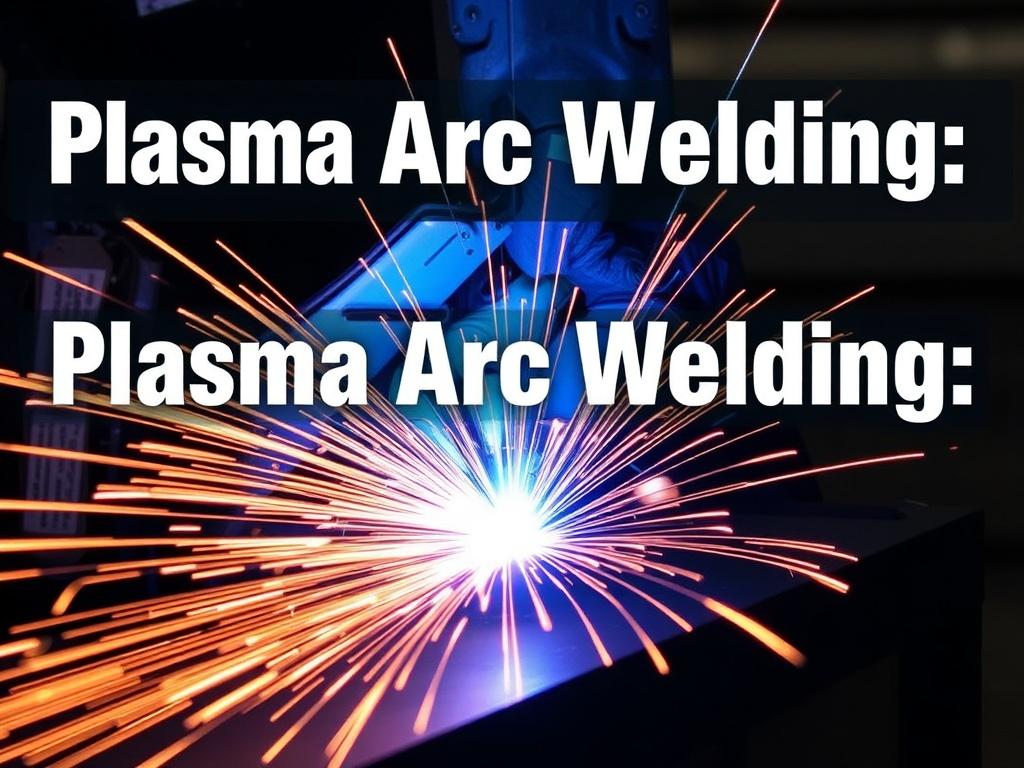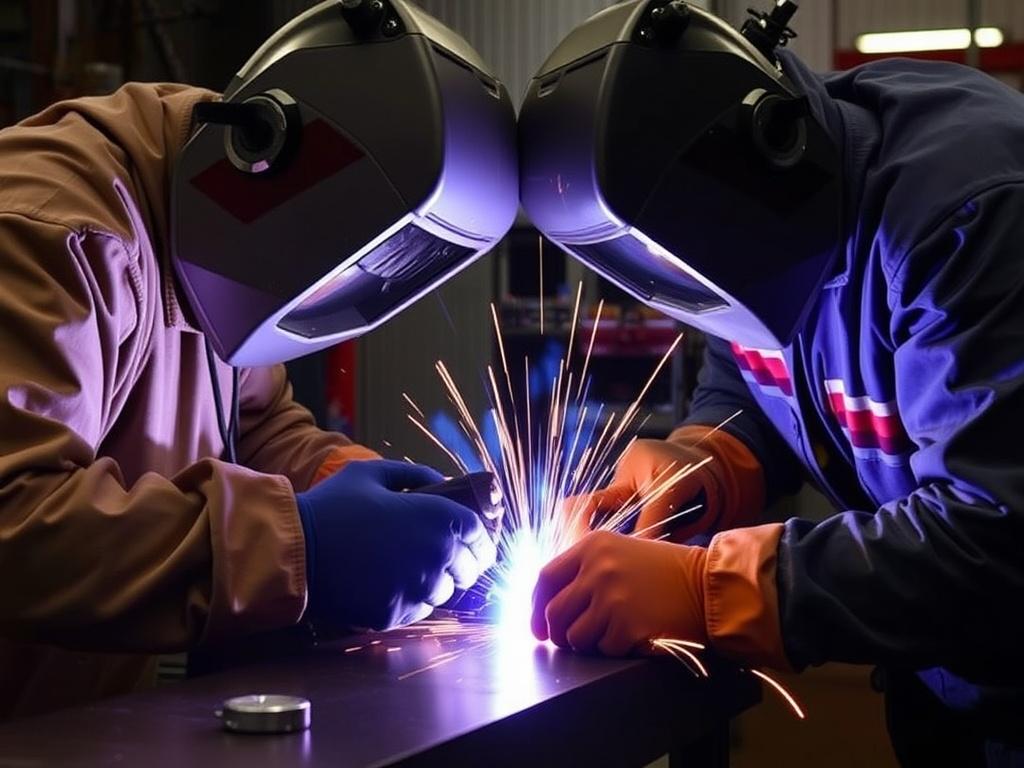
Welcome to the fascinating world of plasma arc welding, a revolutionary joining process that has reshaped how industries approach metal fabrication. Welding is a vital technique in construction, manufacturing, and artistry, and understanding the nuances of plasma arc welding can unveil new horizons whether you’re a student, a professional welder, or simply a curious reader. This article will take you on a detailed journey through how plasma arc welding works, where it’s commonly applied, and why it holds a unique place in the welding family.
What Is Plasma Arc Welding?
At its core, plasma arc welding (PAW) is a process that uses a plasma arc to join two pieces of metal. But what exactly does that mean? Plasma is often called the fourth state of matter—beyond solid, liquid, and gas, plasma is an ionized gas containing free electrons and ions that can conduct electricity. This ionization allows plasma to reach incredibly high temperatures, often exceeding 25,000 degrees Celsius, making it an excellent medium for welding applications.
In plasma arc welding, an electric arc is formed between a non-consumable tungsten electrode and the workpiece. The arc passes through a constricted orifice in the plasma torch, ionizing the gas and forming the plasma jet. This jet is then used to melt and fuse the base metals together, creating a strong weld.
This high precision, high-temperature process allows the welder to achieve a narrow, deep, and extremely controlled weld—often superior to other welding techniques like TIG (tungsten inert gas) or MIG (metal inert gas) welding.
The Science Behind Plasma Arc Welding
Understanding the science behind plasma arc welding brings clarity on why it’s such a powerful welding technique. Let’s break down the key scientific concepts:
- Ionization of Gas: Compressed gas such as argon or hydrogen passes through an orifice in the torch, and when energized by the arc, it becomes ionized, creating plasma.
- Electric Arc Formation: Much like conventional arc welding, electricity flows from the tungsten electrode to the workpiece, but plasma welding constricts this arc through a nozzle to increase energy density.
- Temperature Elevation: The plasma gas’s extreme temperature melts the metal. This melting allows for precise, deep weld penetration.
- Shielding Effect: The plasma and an outer shielding gas (often argon) protect the weld pool from contamination by atmospheric gases.
This process combines principles of physics, chemistry, and metallurgy, resulting in a welding method that is both efficient and versatile.
How Plasma Arc Welding Works: Step-by-Step Process

To appreciate plasma arc welding fully, it’s useful to visualize the exact steps involved from start to finish.
Step 1: Preparing the Base Metals
Like any welding process, plasma arc welding starts with preparing the materials. This typically involves cleaning the metal surfaces removing rust, oil, or contaminants that could affect the weld quality. Proper alignment and securing of parts are critical to ensure a smooth and consistent weld.
Step 2: Setting the Equipment
The welder selects the appropriate plasma torch, electrode, and gas settings tailored to the workpiece type and thickness. Typically, inert gases such as argon are used for shielding and plasma gas, with some applications requiring mixtures including hydrogen or helium for increased heat.
Step 3: Initiating the Arc
The electric circuit is engaged, causing an arc to initiate between the tungsten electrode inside the torch and the workpiece. This arc heats the gas passing through the constricted orifice, converting it into plasma.
Step 4: Melting and Joining the Metals
The plasma jet’s high energy density melts the base metals precisely at the welding zone. The welder manipulates the torch to control the weld pool, ensuring optimal fusion and penetration. Depending on the application, filler material might be added manually or automatically.
Step 5: Cooling and Finishing
After welding, the molten pool solidifies as it cools, forming a joint. The finished weld is inspected for quality, often involving visual checks, non-destructive testing, or mechanical testing depending on the project requirements.
Advantages of Plasma Arc Welding

One might wonder, with so many welding methods available, why choose plasma arc welding? Here’s what makes PAW outstanding:
| Advantages | Explanation |
|---|---|
| High Precision | The constricted plasma arc allows for very fine and accurate welds, crucial for intricate parts and delicate work. |
| Deeper Penetration | PAW can achieve greater weld depth than TIG due to the higher arc energy density. |
| Cleaner Welds | The shielding gases and controlled environment minimize contamination, leading to fewer defects. |
| Versatility | It can weld almost all metals, including stainless steel, aluminum, titanium, and even exotic alloys. |
| Higher Welding Speeds | Due to its efficiency and concentrated heat source, PAW is often faster, reducing project time. |
| Automatable | Its precise control makes plasma arc welding highly compatible with robotic and automated welding systems. |
With these significant advantages, plasma arc welding is often the preferred choice for applications demanding quality and performance.
Disadvantages and Challenges of Plasma Arc Welding
Like every technology, plasma arc welding has its drawbacks and requires certain considerations before choosing it for a specific project. Knowing these limitations helps avoid surprises during execution.
- Higher Initial Cost: Plasma welding equipment tends to be more expensive compared to simpler welding machines. This includes specialized torches and power sources.
- Equipment Complexity: Operators require more training and experience to use PAW effectively, especially when making critical welds.
- Gas Consumption: The process uses inert gases which can add to operational costs and require proper ventilation.
- Limited Thickness Range: Although very effective for thin and medium-thickness materials, PAW may not be the best choice for extremely thick metal sections without special setups.
- Heat-Affected Zone: While generally narrow, if not carefully managed, the plasma arc’s intense heat can cause distortion in thin materials.
However, these challenges are often outweighed by the benefits, especially in industrial or specialized manufacturing environments.
Common Applications of Plasma Arc Welding
Now, let’s explore where plasma arc welding finds its prime applications, revealing why it enjoys popularity across multiple sectors.
1. Aerospace Industry
The aerospace industry demands materials that can withstand extreme stress and temperature while maintaining lightweight properties. PAW is used extensively in fabricating aircraft components such as turbine blades, fuel tanks, and fuselage parts due to its precision and ability to join advanced alloys.
2. Electronics and Microfabrication
For tiny, intricate parts in electronics, plasma arc welding’s narrow and controlled weld pool makes it ideal. It’s applied in creating connectors, sensors, and microelectronics that require delicate handling.
3. Automotive Manufacturing
Automakers employ plasma arc welding primarily for high-strength joints, precision parts, and situations where speed is critical. Its use is growing in electric vehicle manufacturing where specialized materials often require exact welding processes.
4. Medical Device Manufacturing
The medical field demands impeccably clean and strong joints for devices like surgical instruments and implants. PAW ensures welds free from contamination and offers the precision necessary for these complex shapes.
5. Nuclear and Power Generation
The process is well suited for experiments and repair in nuclear reactors or power plants because of its ability to produce high-quality welds on stainless steel and other radiation-resistant materials.
6. Tool and Die Industry
PAW’s exceptional precision aids in repairing or fabricating dies and molds which require exact dimensions and flaw-free joints.
Types of Plasma Arc Welding Processes
Over the years, technology has evolved several variants of plasma arc welding, each tailored to specific needs. Let’s understand the main types employed in industry.
Transferred Arc Plasma Welding
In this setup, the arc is between the tungsten electrode and the workpiece, meaning the plasma jet directly contacts the metal being welded. This method provides high heat input and is ideal for welding thicker metals due to its deep penetration capabilities.
Non-Transferred Arc Plasma Welding
Here, the arc stays inside the torch, between the electrode and the nozzle. The plasma jet heats the workpiece indirectly by radiation. While this method produces less heat than the transferred arc, it’s often used for surface treatments and cutting rather than deep welding.
Automatic and Mechanized PAW
Many industrial applications now integrate plasma arc welding with robotic arms or mechanized systems. This automation enables consistent, high-quality welds and increased production throughput.
Materials Compatible with Plasma Arc Welding
One of the remarkable benefits of plasma arc welding is its adaptability across numerous metals and alloys.
| Material | Characteristics | Common Applications |
|---|---|---|
| Stainless Steel | Corrosion-resistant, high strength, suitable for most welding techniques | Food processing equipment, medical devices, aerospace components |
| Aluminum and its Alloys | Lightweight, good conductivity, requires precise heat control | Aircraft bodies, automotive parts, transportation equipment |
| Titanium | Lightweight, strong, highly corrosion-resistant but sensitive to contamination | Aerospace, medical implants, chemical plants |
| Nickel Alloys | High corrosion resistance and temperature stability | Power plants, nuclear reactors, chemical processing |
| Carbon Steel | Widely used structural metal, easy to weld with proper technique | Construction, pipelines, machinery fabrication |
Whether joining ferrous or non-ferrous metals, plasma arc welding accommodates them with adjustments in gas composition, current, and torch setup.
Comparing Plasma Arc Welding with Other Welding Techniques

Understanding how plasma arc welding stacks up against other popular welding methods helps in choosing the right process for your needs. Below is a comparative summary:
| Feature | Plasma Arc Welding | TIG Welding (GTAW) | MIG Welding (GMAW) | Stick Welding (SMAW) |
|---|---|---|---|---|
| Heat Concentration | High – constricted plasma jet | Medium – open arc | Lower – broader arc | Broad arc with slag |
| Precision | Very High | High | Moderate | Lower |
| Speed | Moderate to High | Slow | High | Moderate |
| Equipment Cost | High | Moderate | Low to Moderate | Low |
| Skill Requirement | High | High | Moderate | Moderate |
| Typical Use Cases | Precision welding, aerospace, electronics | Thin metals, critical welds | Production welding, thicker metals | General purpose, fieldwork |
Clearly, plasma arc welding holds a niche where precision, quality, and specialized material handling matter most.
Techniques and Tips for Effective Plasma Arc Welding
Even with advanced technology, the skill and approach of the welder profoundly influence outcomes. Here are some practical techniques and tips to maximize plasma arc welding success:
- Maintain Proper Torch Angle: A torch angle between 0 to 15 degrees relative to the work surface ensures the plasma jet remains focused and stable.
- Optimize Gas Flow: Adjust the plasma and shielding gas flow rates carefully. Too much gas can cause turbulence; too little can allow contamination.
- Control Travel Speed: The travel speed should balance penetration and weld quality. Moving too fast can lead to weak joints; too slow can cause burn-through.
- Use Appropriate Filler Material: Match the filler rod with base metal chemistry for sound metallurgical bonds.
- Preheat When Necessary: For thick or high-alloy metals, preheating the workpiece can reduce thermal cracking.
- Post-Weld Treatment: Cooling methods and post-weld heat treatment can improve weld strength and reduce stress.
By following these guidelines, welders can harness the full potential of plasma arc welding and produce high-quality, reliable joints.
Future Trends in Plasma Arc Welding
As technology continues to evolve, plasma arc welding is poised to integrate new advancements, making it faster, more efficient, and accessible across industries:
- Automation and AI Integration: Robotic plasma welding combined with AI-driven controls will enhance precision, speed, and reduce human error.
- Advanced Consumables: Development of durable electrodes and specialized gas mixtures will extend torch life and improve weld quality.
- Hybrid Processes: Combining plasma arc welding with laser or electron beam techniques may increase versatility and depth capability.
- Environmental Sustainability: Innovations aimed at lowering gas consumption and energy use will reduce environmental impact.
These trends highlight a bright future for plasma arc welding as industries demand ever-more sophisticated metal joining solutions.
Conclusion: Why Plasma Arc Welding Matters
In summary, plasma arc welding stands out as a precision, powerful, and adaptable welding method, mastering challenging materials and applications that many other techniques cannot handle. Its ability to produce clean, strong welds with deep penetration makes it invaluable in aerospace, medical, electronics, and many heavy industries.
Whether you are a welder seeking knowledge or an engineer selecting a process for an upcoming project, understanding how plasma arc welding works and where it’s used equips you to make informed decisions leveraging this cutting-edge technology. The blend of physics, metallurgy, and engineering that drives PAW is a testament to human ingenuity—and a doorway to creating stronger, safer, and more reliable products in the future.
Thank you for exploring this comprehensive guide to plasma arc welding. The next time you see a spark in a high-tech fabrication shop, you might just be witnessing the power of plasma.
